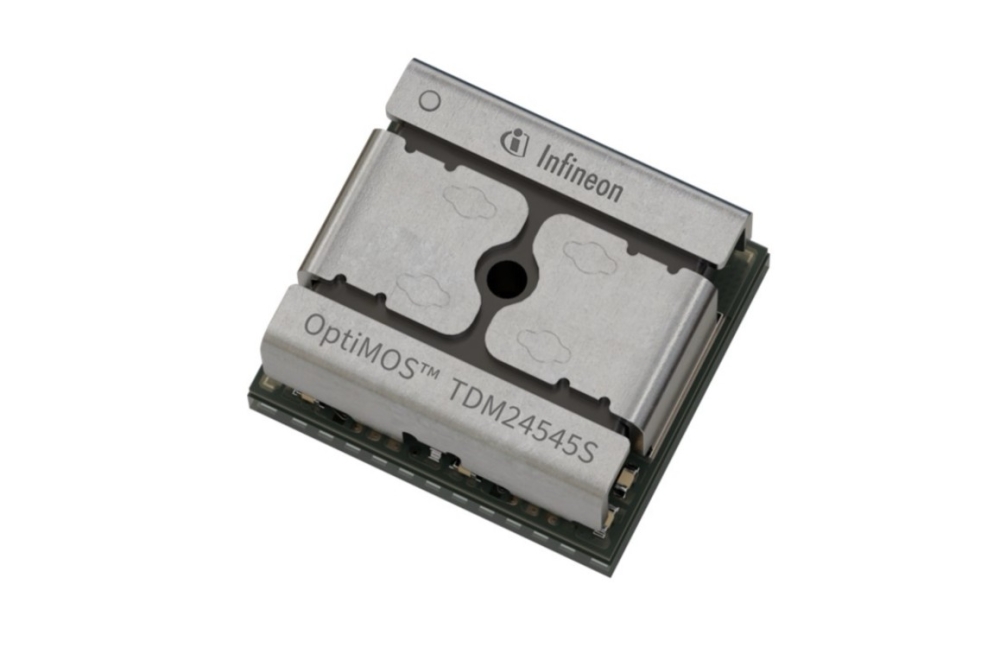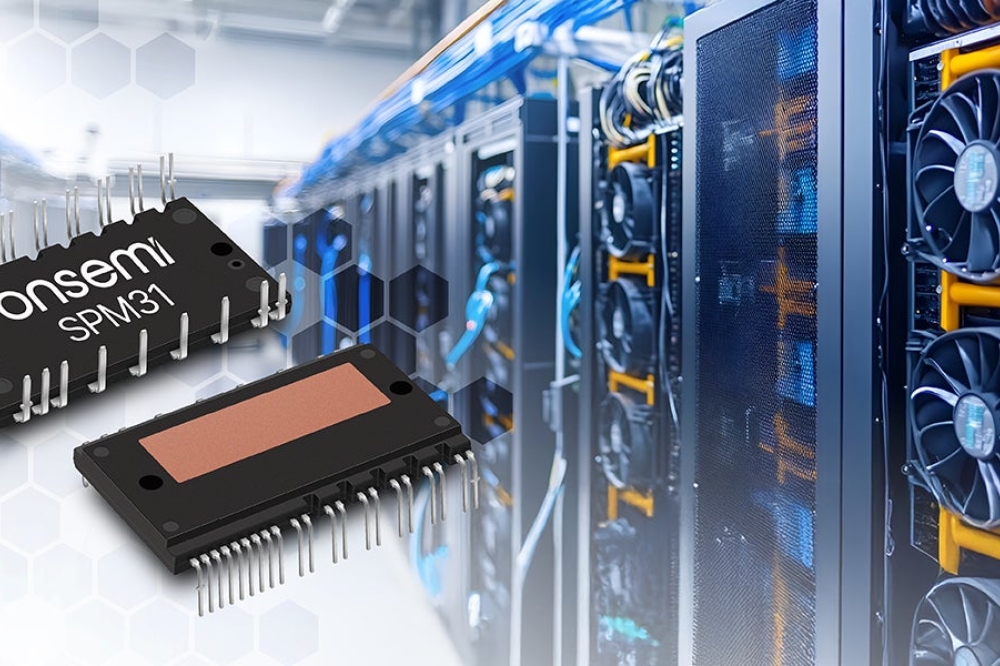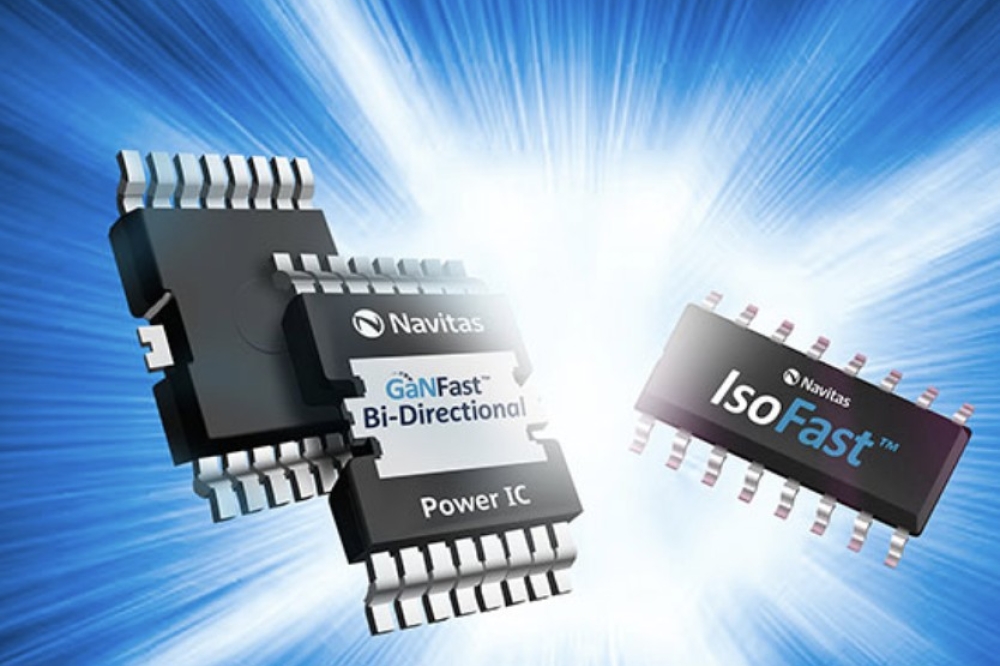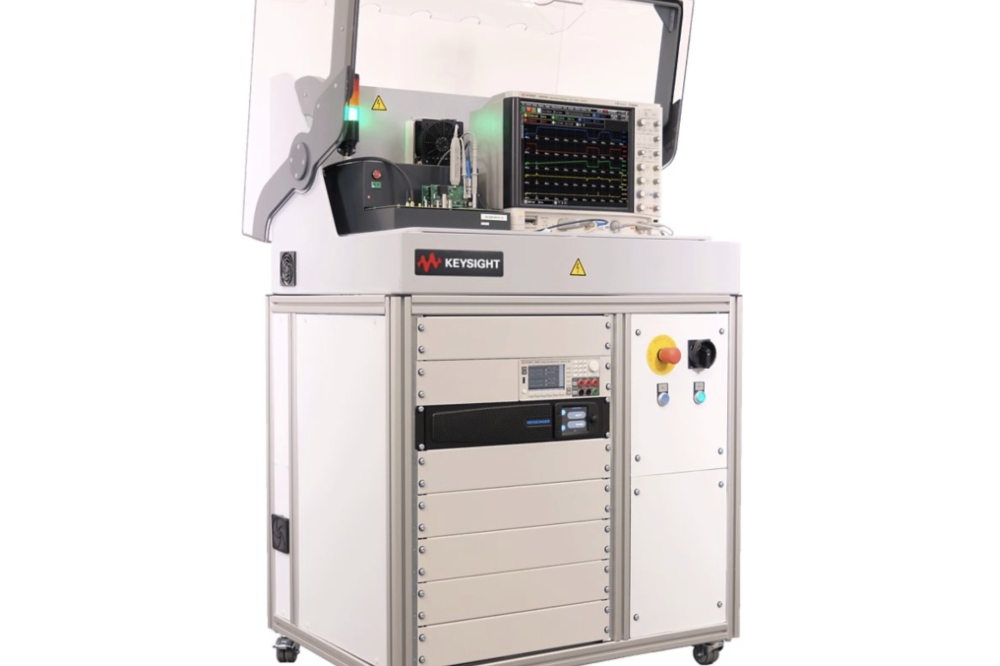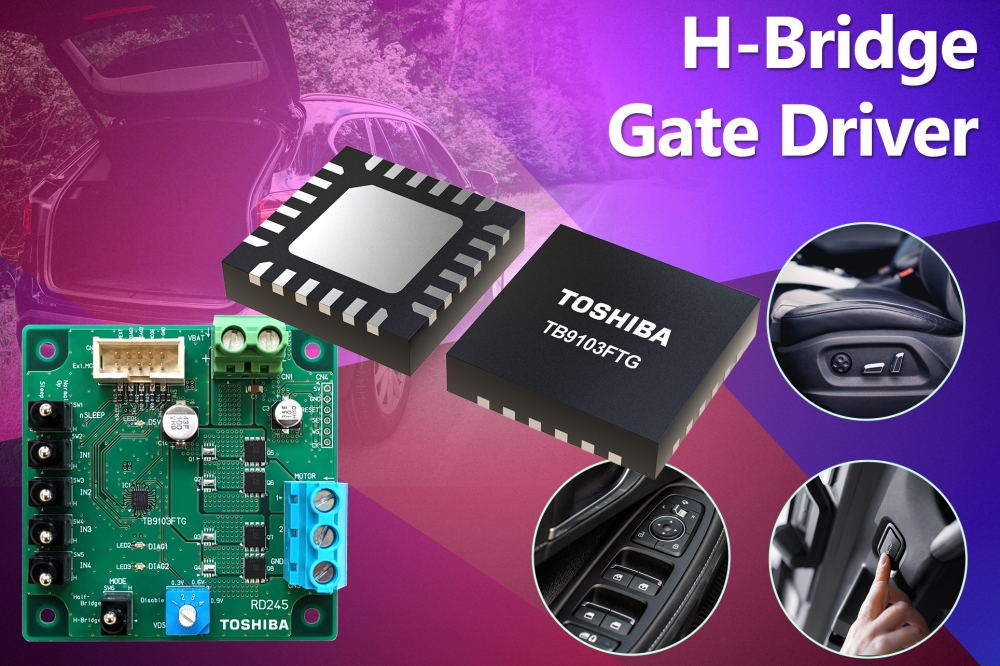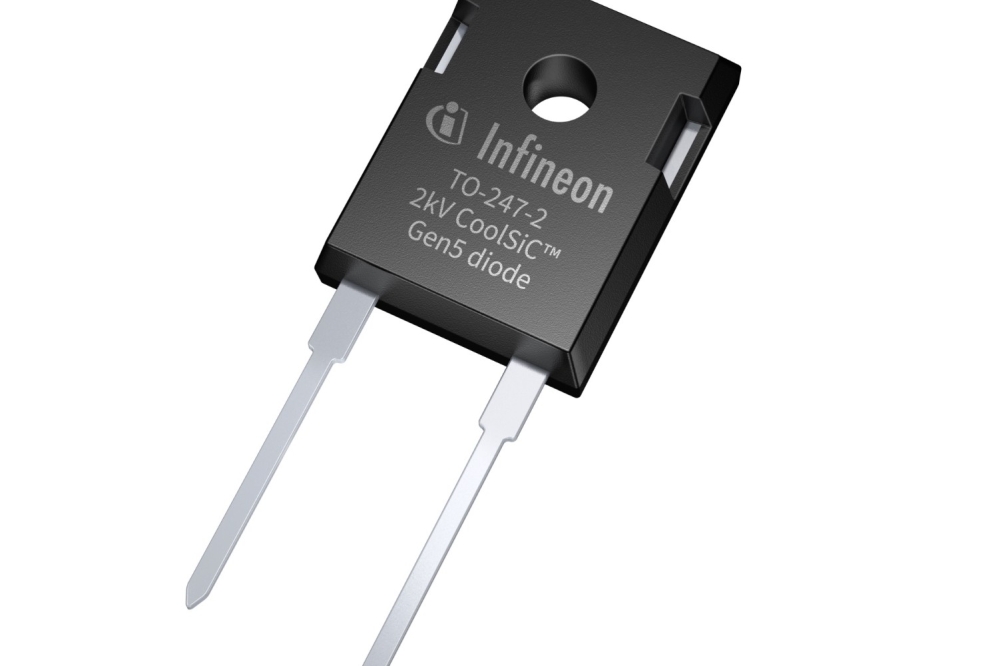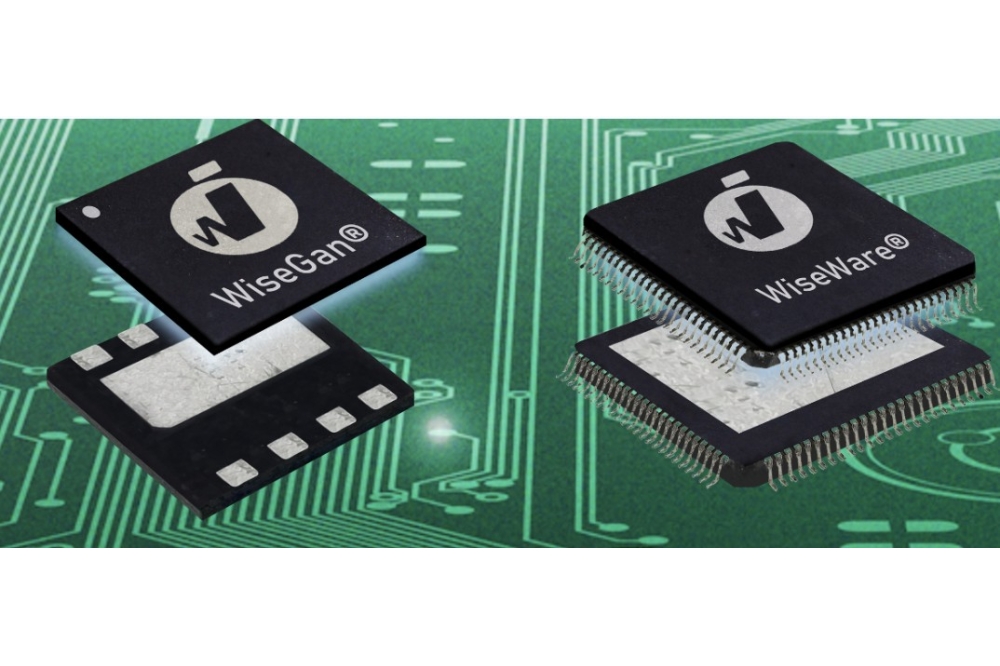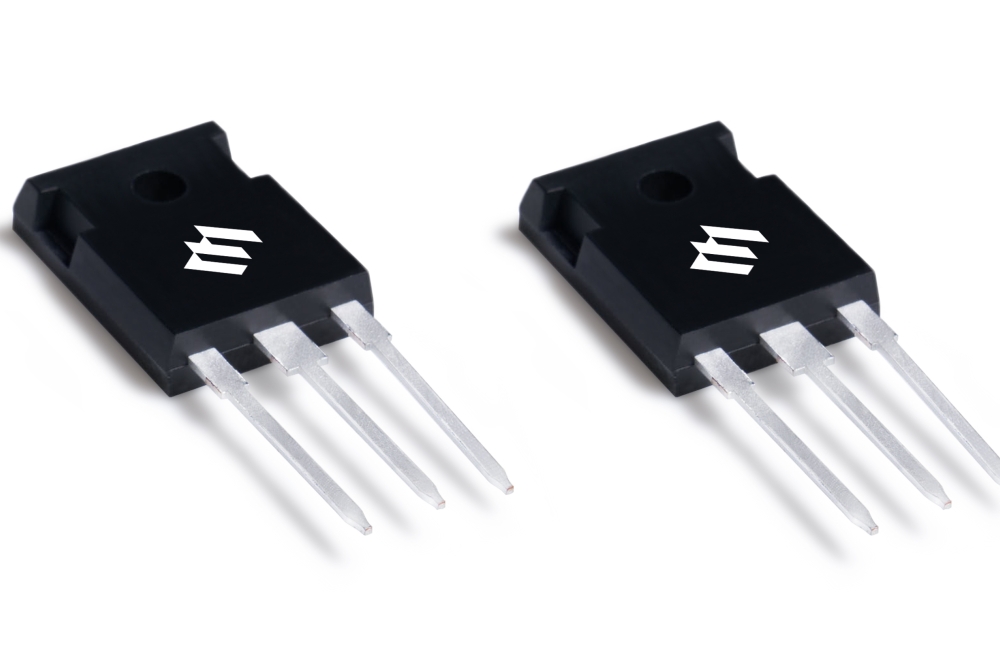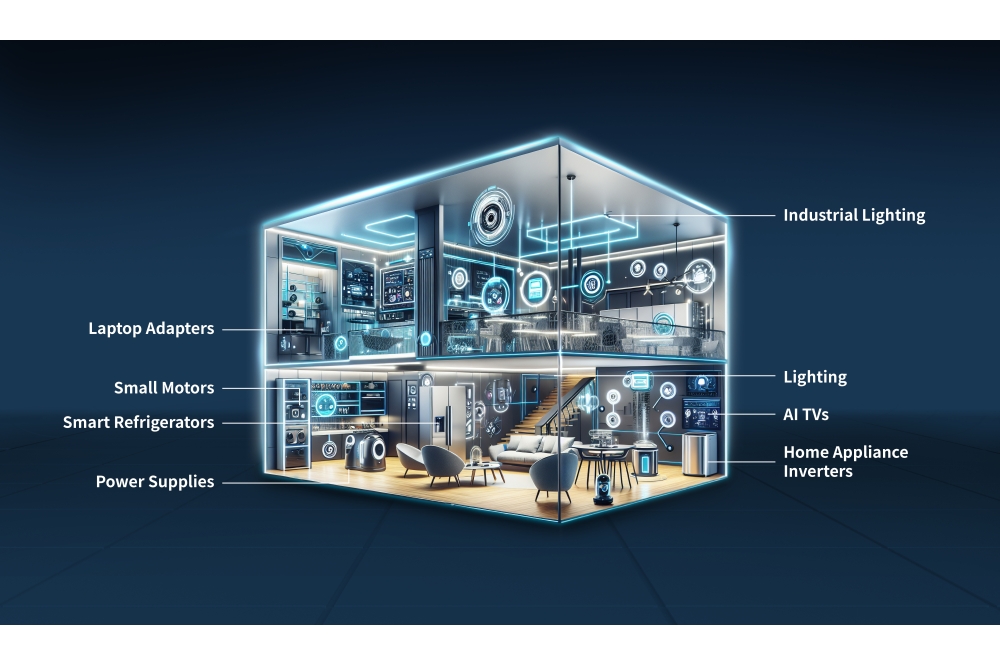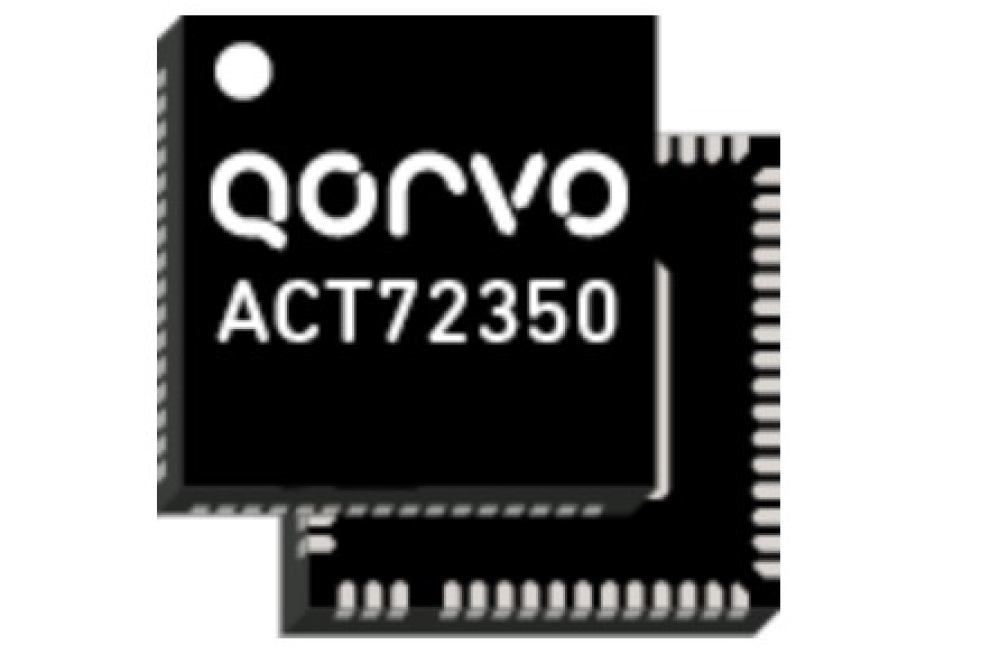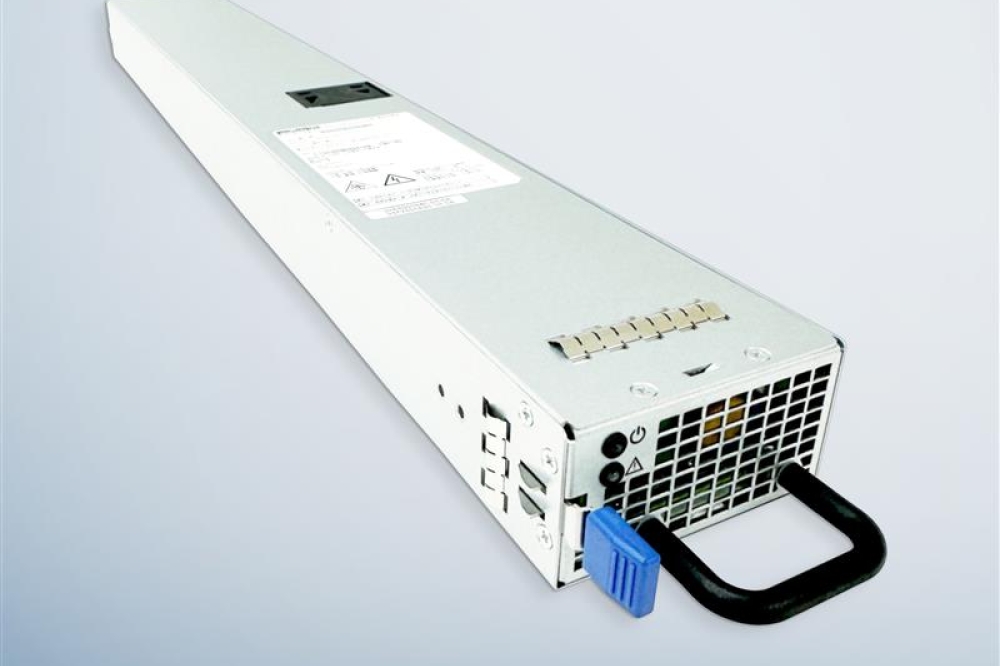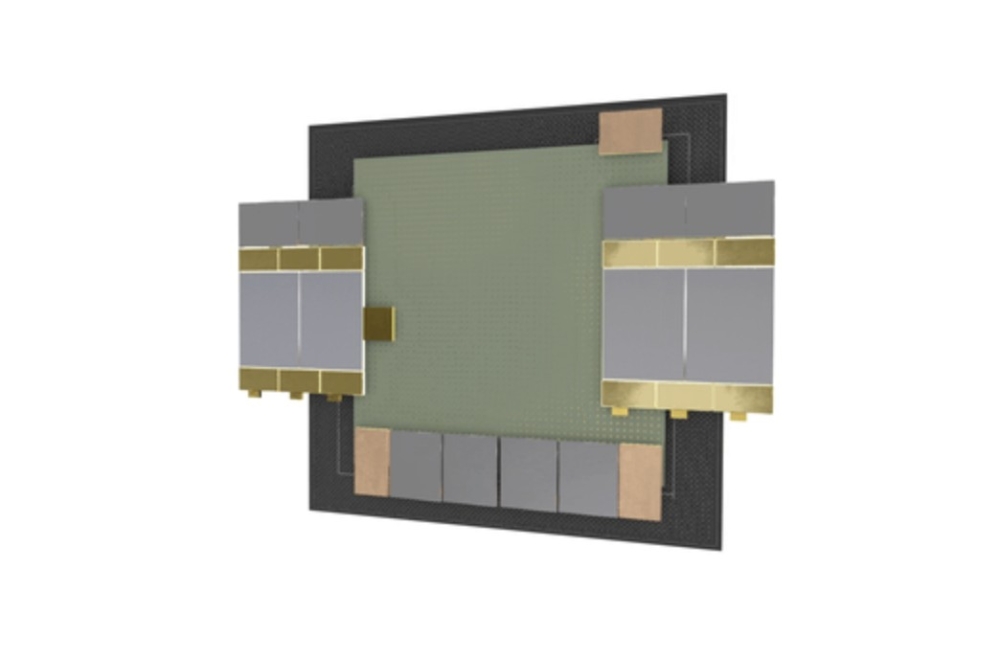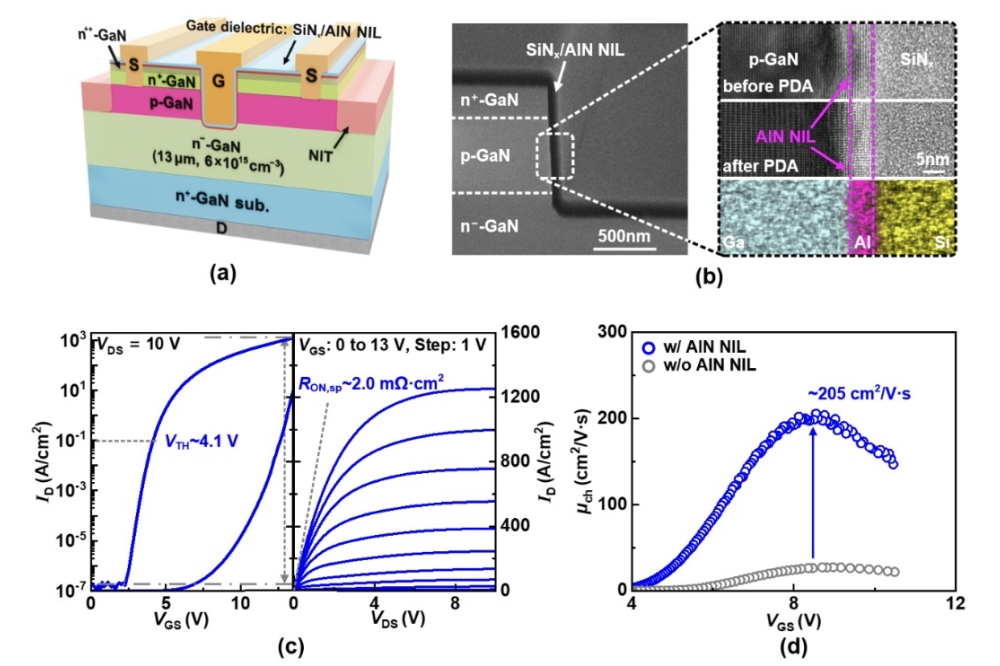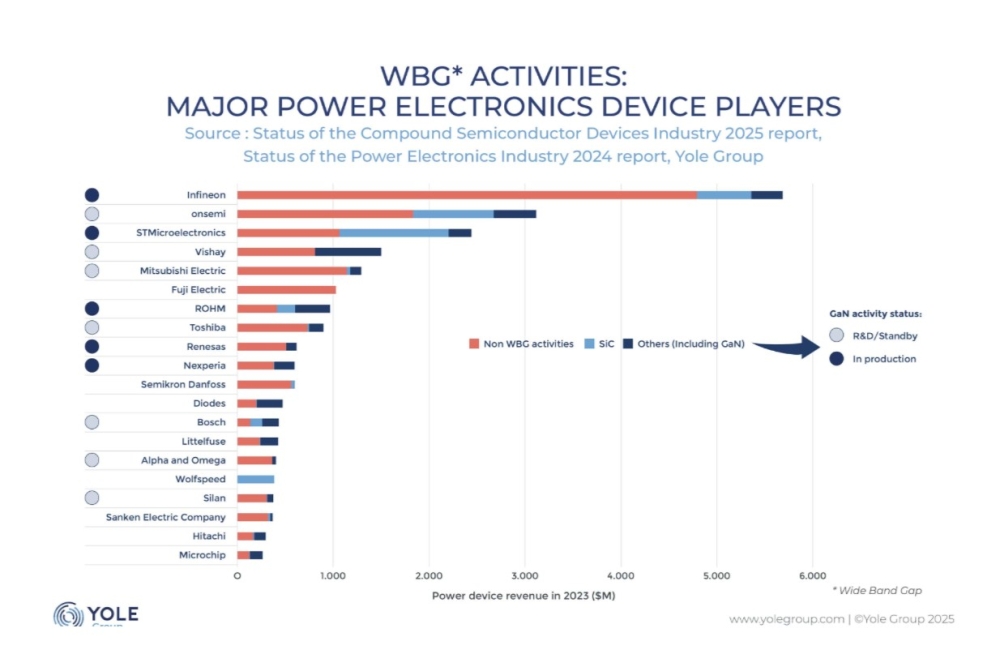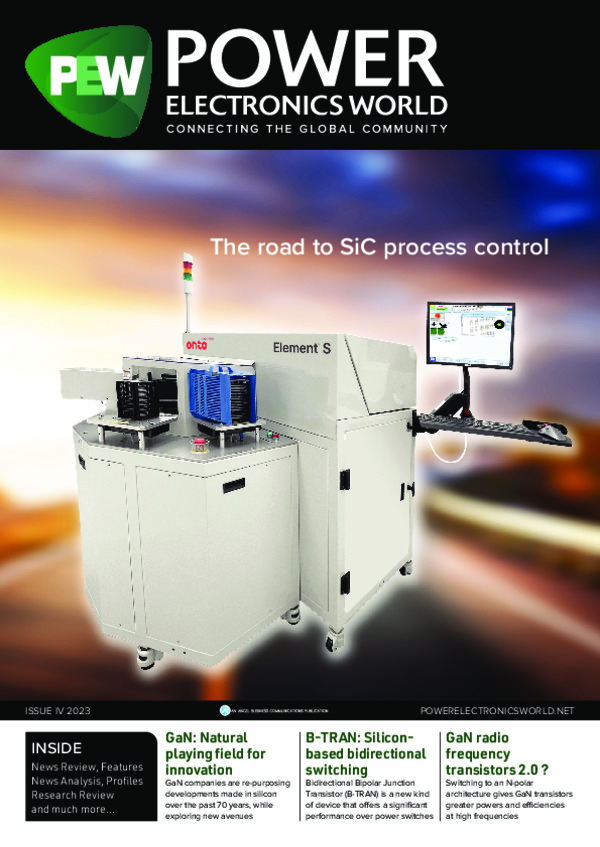
B-TRAN: a first for silicon-based high voltage bidirectional switching

The Bidirectional Bipolar Junction Transistor (B-TRAN) is a new kind of device that offers a significant performance improvement over conventional power switches. Ideal Power explores the performance and operation of this novel technology.
With advances in electric vehicles and renewable energy technologies, bidirectional switches have become important to solve four quadrant operation applications. For example, the performance of certain topologies employing bidirectional switches, such as Vienna Rectifiers, T-Type Inverters and Matrix Converters, would benefit considerably from a more efficient bidirectional switch.
B-TRAN is a novel four-quadrant power switch with ultra-low forward voltage and low switching losses that can be used in both unidirectional and bidirectional switching applications. Crucially, it offers a significant performance improvement over power switches such as SCRs, IGBTs and MOSFETs, as implemented in silicon or wide-band-gap materials such as SIC. The total power loss is also much lower than that of IGBTs, particularly in bidirectional applications. Ideal Power has already received over 75 patents worldwide for B-TRAN topology and its method of operation.
B-TRAN device construction and operation
B-TRAN is strictly symmetrical and bidirectional in nature and has a positive temperature coefficient. The unique process innovation allows for dual-sided device fabrication for a monolithic vertical device. B-TRAN architecture in silicon with symmetrical structure is demonstrated in Figure 1.
First-generation B-TRAN devices produced in a commercial foundry, achieved performance of 6mΩ on-state resistance, which is state-of-the-art for a bidirectional switch in silicon.
They also demonstrated excellent low die-to-die variability, laying a solid foundation for current sharing control in power modules called SymCool which have four B-TRAN single die in parallel.
SymCool packaging impedance is as low as 0.4 mΩ and 10 nH at 35 kHz for a 1200V/160A rated power module, with a unique Kelvin Source designed to reduce gate-source loop inductance.
Finally, the SymCool bidirectional power module’s performance demonstrated 4mΩ resistance @ 160A thanks to the B-TRAN die’s ultra-low VCE(ON) and careful design of the interconnections and module material. Figure 2 shows a B-TRAN discrete TO-264 package. Figure 3 illustrates the SymCool B-TRAN power module.
B-TRAN is a normally-on device with the load current flowing between E1 and E2 terminals. To operate the B-TRAN die as a normally-off device, a low voltage (<60V) cascode MOSFET is connected below E1 and E2. The B-TRAN operation states are shown in Figure 4.
• To turn off the device with the top E1 connected to high voltage (1200V), cascode FET Q2 is opened and B2 is connected to ground. The depletion region from E1 to B2 blocks the high voltage.
•To turn on the device, the top B1-E1 terminal is driven with a voltage of ~1.5V to drive current into the base terminal B1. By adding the positive bias, the minority carriers are injected into the drift region, increasing the carrier density in the N- drift region, so the resistance between the top E1 and bottom E2 is significantly reduced. Q1 and Q2 are turned on to allow the current flow.
B-TRAN Performance
The single-die conduction loss characteristic is illustrated in Figure 5. With a 50A-load current at a junction temperature of 25°C, VCE(ON) is only 0.36V. The conduction loss for the single die is only 18W. Typical device Ic-Vc curves for different load currents and associated driving currents at 25°C and 175°C are shown in Figure 5 and Figure 6, respectively. As the junction temperature increases to 175°C, VCE(ON) increases, and the driving current needs to exceed 10A to get the load current of 50A.
Characterisation demonstrates a positive temperature coefficient in Figure 7. The higher the temperature, the lower the IC, which is preferred for multiple die-in-parallel power module design. Typical switching energy including Eon, Eoff and Esw at different junction temperatures at 800V/ 100A is displayed in Figure 8. The higher the temperature, the higher Eon and Eoff. Esw does not change significantly with junction temperature. The single die was also successfully operated at much higher voltage and current up to 600V/200A.
B-TRAN applications and future developments
In addition to excellent bidirectional conduction and blocking capabilities, B-TRAN can also be used for a wide range of unidirectional switch applications, such as replacing IGBT+reverse diode and MOSFETs in switching applications. The B-TRAN die can also be optimised for high-speed switching applications (HS variant). Initial simulations and experiments of a high-speed variant (HSx) have shown a much-improved turn-on and turn-off time with only a slight increase in on resistance.
The SymCool bidirectional power module has significant advantages and can serve as direct replacement in solid-state circuit breakers, T-Type inverters, and other similar applications using Common-Emitter/Collector devices.
SymCool can also be designed with high-speed die (HSx) for switching applications. With its ultra-low losses and double-sided cooling package, the design and volume requirements of the heat sink for the SymCool power module are eased. Forced air cooling or natural convection with heat sinks on both sides is sufficient for most applications. This results in substantial system volume and cost savings.
The B-TRAN device performance and tight process control in a commercial foundry has laid a solid foundation for the bidirectional multi-die power module design. SymCool, the first power module designed with B-TRAN, offers a bidirectional 4mΩ switch @ 160A, which is one of the lowest in the industry.
Ultra-low losses along with the natural ability to design a double-sided cooled package due to symmetrical die design offers many advantages compared to other solutions. With die optimisations to increase the switching speed, the range of applications of B-TRAN will increase.



